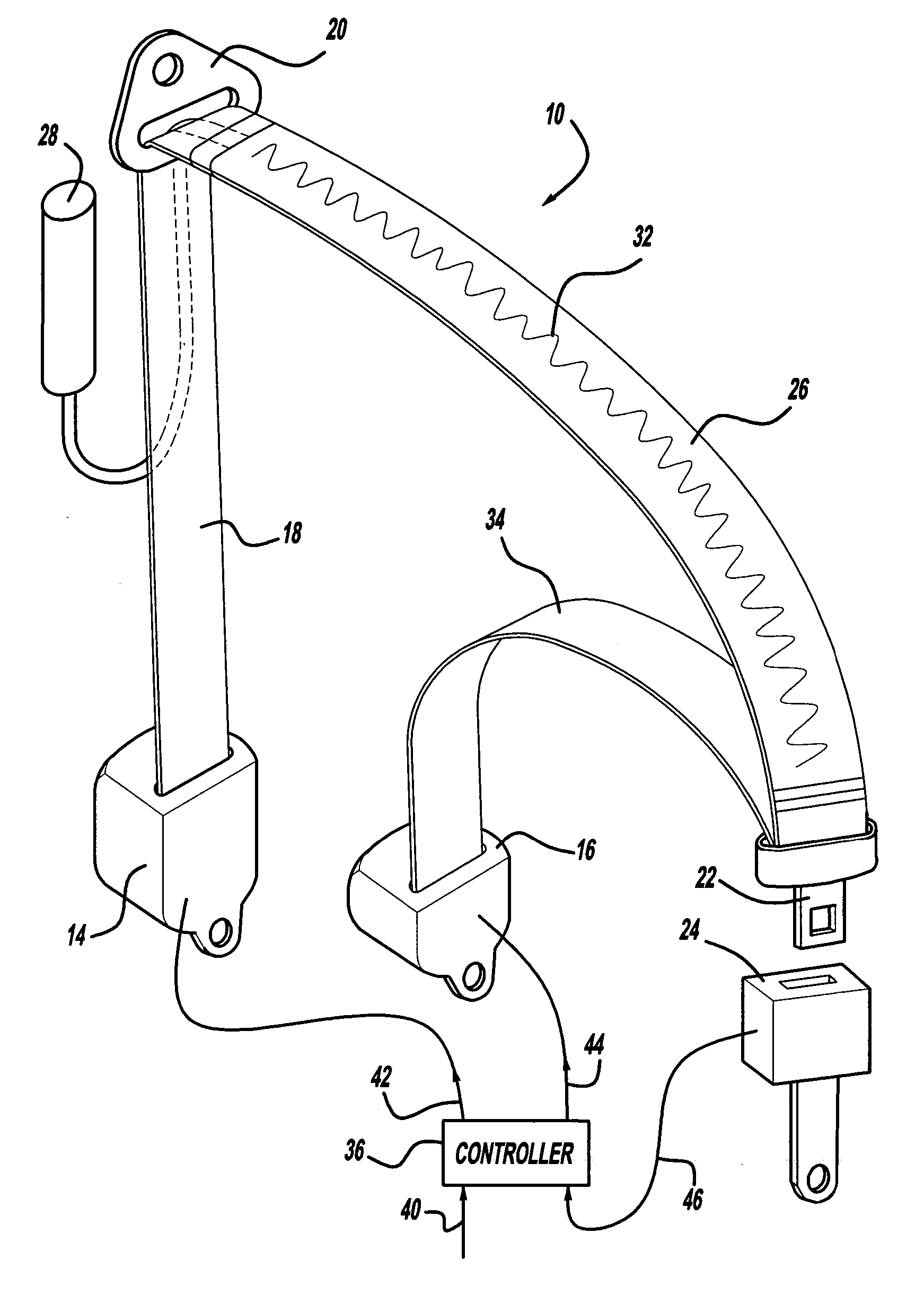Seat belt system
a seat belt and three-point technology, applied in the direction of vehicle safety belts, pedestrian/occupant safety arrangements, vehicle components, etc., can solve the problems of reducing the comfort of passengers, reducing the practical limit of the inflatable belt section of the belt webbing, and reducing the safety of passengers, so as to prevent the extraction of webbing, enhance the protection of passengers, and enhance the comfort and convenience
- Summary
- Abstract
- Description
- Claims
- Application Information
AI Technical Summary
Benefits of technology
Problems solved by technology
Method used
Image
Examples
Embodiment Construction
[0012]With reference to the Figures, seat belt system 10 is shown installed for protecting an occupant seated within vehicle seat 12. Seat belt system 10 principally comprises shoulder retractor 14, lap retractor 16, and webbing 18. Webbing 18 passes through a “D” ring 20 mounted to the vehicle, typically at the so-called “B” pillar of the vehicle. Seat belt system 10 is deployed (or “worn” or “donned”) when the occupant grasps tongue 22 and inserts it into buckle 24 securing them together by “latching” the seat belt. In a preferred embodiment of the system 10, tongue 22 is permitted to freely slide along webbing 18. The thick belt section, is in the case of the illustrated embodiment, an inflatable belt section 26, is fastened to webbing 18 in a conventional manner. Shoulder retractor 14 is attached to an upper end of webbing 18 which defines the shoulder belt section 32 of the webbing which is intended to be positioned to engage the upper torso region of the occupant when the syst...
PUM
 Login to View More
Login to View More Abstract
Description
Claims
Application Information
 Login to View More
Login to View More - R&D
- Intellectual Property
- Life Sciences
- Materials
- Tech Scout
- Unparalleled Data Quality
- Higher Quality Content
- 60% Fewer Hallucinations
Browse by: Latest US Patents, China's latest patents, Technical Efficacy Thesaurus, Application Domain, Technology Topic, Popular Technical Reports.
© 2025 PatSnap. All rights reserved.Legal|Privacy policy|Modern Slavery Act Transparency Statement|Sitemap|About US| Contact US: help@patsnap.com



